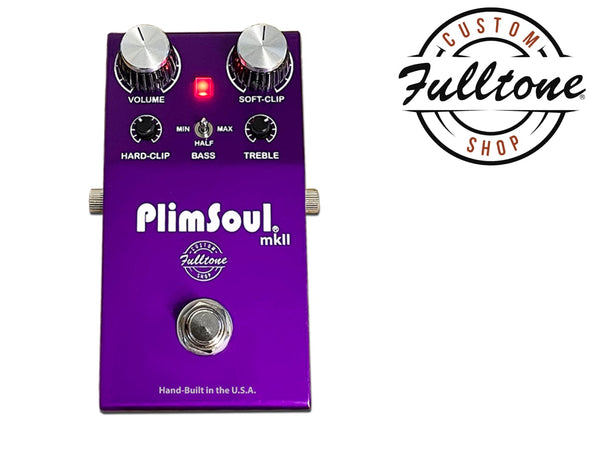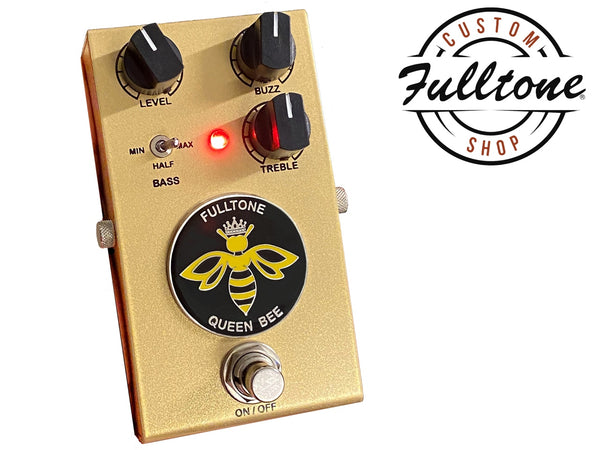OCD- Cosmetic Blem
 $ 0.00
$ 0.00
SOLD OUT
OCD
Born in 2004, The OCD became one of the most sought after overdrives ever made, a fact born out by the many shitty clones being offered by large companies too unscrupulous and cheap to license the real deal. They still haven’t got it right.
V2 FEATURES:
output buffer (when pedal is turned on I True-Bypass mode, or always when in Enhanced Bypass mode)) which eliminates it from being influenced be effects that came after it. Translation, your sound remains consistent regardless of placement in today’s more complex signal-chains, loopers, and pedalboards. This buffer also had a positive effect on the sound, it reduced loading on the pedal’s hard-clipping stage, allowing more sustain of both the sound and the overtones.
Class A configured discrete 2N5457 JFET input section, raising the input impedance to 1 mega ohms (previously 330K) and increasing the dynamics…resulting in significantly better interaction with both single coil and humbuckers.
Internal switch to choose between ”Enhanced Bypass TM” & True-Bypass, and with no popping sound in either mode. No other company offers EB…I invented it.
A downside to True-Bypass:
True-Bypass (TB) switching was the ultimate way to achieve a clean signal path for many years. Everything’s different now, most guitarists have elaborate pedalboards with 10 or more pedals being the norm, and tremendous potential for signal and tone loss with the many cables, connectors, and other pedals involved in the chain. There can be so much signal loss that it sounds nothing like the sound of a guitar with a cable straight into the front of a great tube amp. Uninspiring.
What’s the pedal industries’ solution to this problem for the last 40 years?
Unity-gain buffered bypass…i.e. a couple of Field effect Transistors (FETs) configured as unity-gain buffers ala Boss, Ibanez, etc, etc.
What’s the benefit to unity-gain FET buffered bypass?
It reduces the loading effect that occurs using long lengths of cable, and you remove the loud “popping” sound when switching the device on and off.
What’s the issue with unity-gain FET buffered bypass?
Although my ears always told me that it sounded “tinny” and that there was signal loss, with the help of a my favorite Electronic Engineer (using some very expensive test equipment) we recently documented that each unity-gain FET buffer actually cuts the gain somewhere between 0.3 to 0.6 dB. This loss of gain is in the low-Mids and Bass frequencies, resulting in that “tinny” sound now that the highs remained and some of the bass and mids are gone. Now factor in that there are two FETs per pedal required to couple the IN & OUT path, that’s an obvious loss of between 1dB-2dB per pedal.
What’s an even bigger issue with this old style unity-gain FET bypass?
It kills dynamic pick response, i.e. it kills the difference between picking soft and picking hard…Yes, when the pedal is in bypass! This to me is a deal-breaker, and while I’ve always felt this to be the case, it’s great to be able to actually see it on the scope.
What’s the solution?
Enhanced Bypass! Configuring both of the switching FETs to operate in Class-A mode.
By configuring a FET for gain (also referred to as wiring it “Class-A“) all the dynamics return (and then some), even if you only configure it with the slightest amount of gain, in this case: 0.3 to .06 dB.
People rave about old EP-3 Echoplexes and Ep-3 type boosters, and although they know that they love what it does to the guitar’s sound, they can’t explain why. It’s because of the Class-A FET preamp! With a Class A FET the dynamics get amplified, allowing an even greater range of expression than if you were playing through a guitar and just one cable straight into your amp. The downside with EP-3 preamps is that they throw the signal OUT-of-phase, boost treble, and cut bass. Fulltone’s EB the signal exits the pedal IN-phase and doesn’t change the EQ at all.
With OCD V2’s Enhanced Bypass you get this benefit whether the pedal is turned ON or OFF.
This means that just having the OCD turned off in your signal chain makes the whole rig sound alive, fresh, and more powerful again.
SOUNDWISE?
The stages added to the circuit changed the OCD, there’s no doubt, but it changed for the better.
Words some people used to use to describe the OCD: “brash,”--“scooped sounding,”--“Bassy,”--“lacks sustain,”-- “too affected by other pedals”….NO LONGER APPLY.
SIDE STORY
I love Robin Trower, but I get frustrated when I see him play because he’s always using a (pre-Full-Drive2) 1992 3-knob Fulldrive that he got new from me back then. How does that help me sell new pedals?
Recently I sent a V2 OCD to him. Then I get a call: “Mike, this OCD...it’s unbelievable, I like it better than my #1 vintage Full-Drive! It’s not brash like my other OCD’s.” (ouch)
So now I’m confused, what does a new OCD have to do with an old Full-Drive? Not much, in my estimation.
(Robin continues) “It is so natural, full-bodied, and the opposite of brash! I’m using it on stage, tonight’s the second night! Cheers!”










